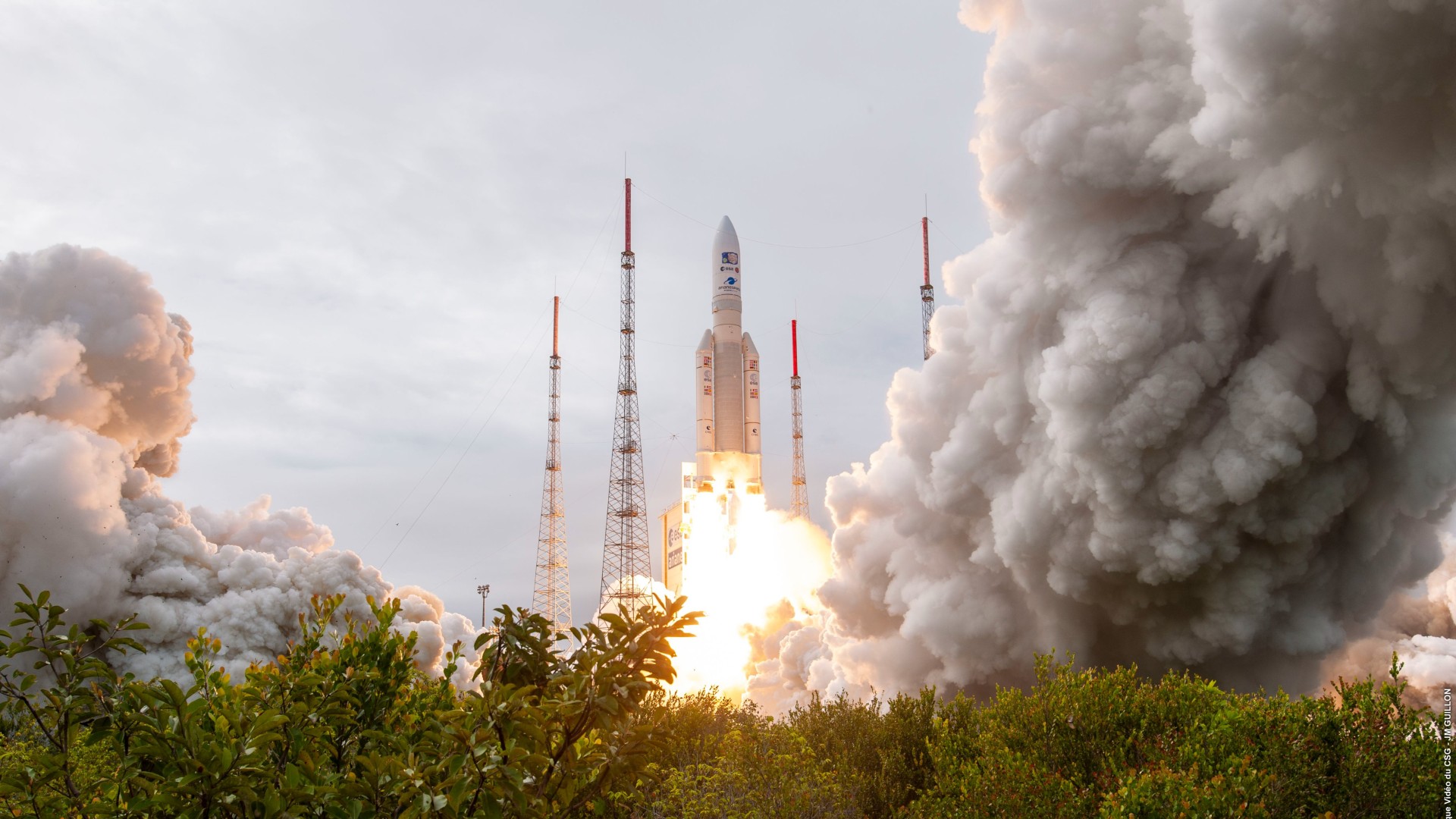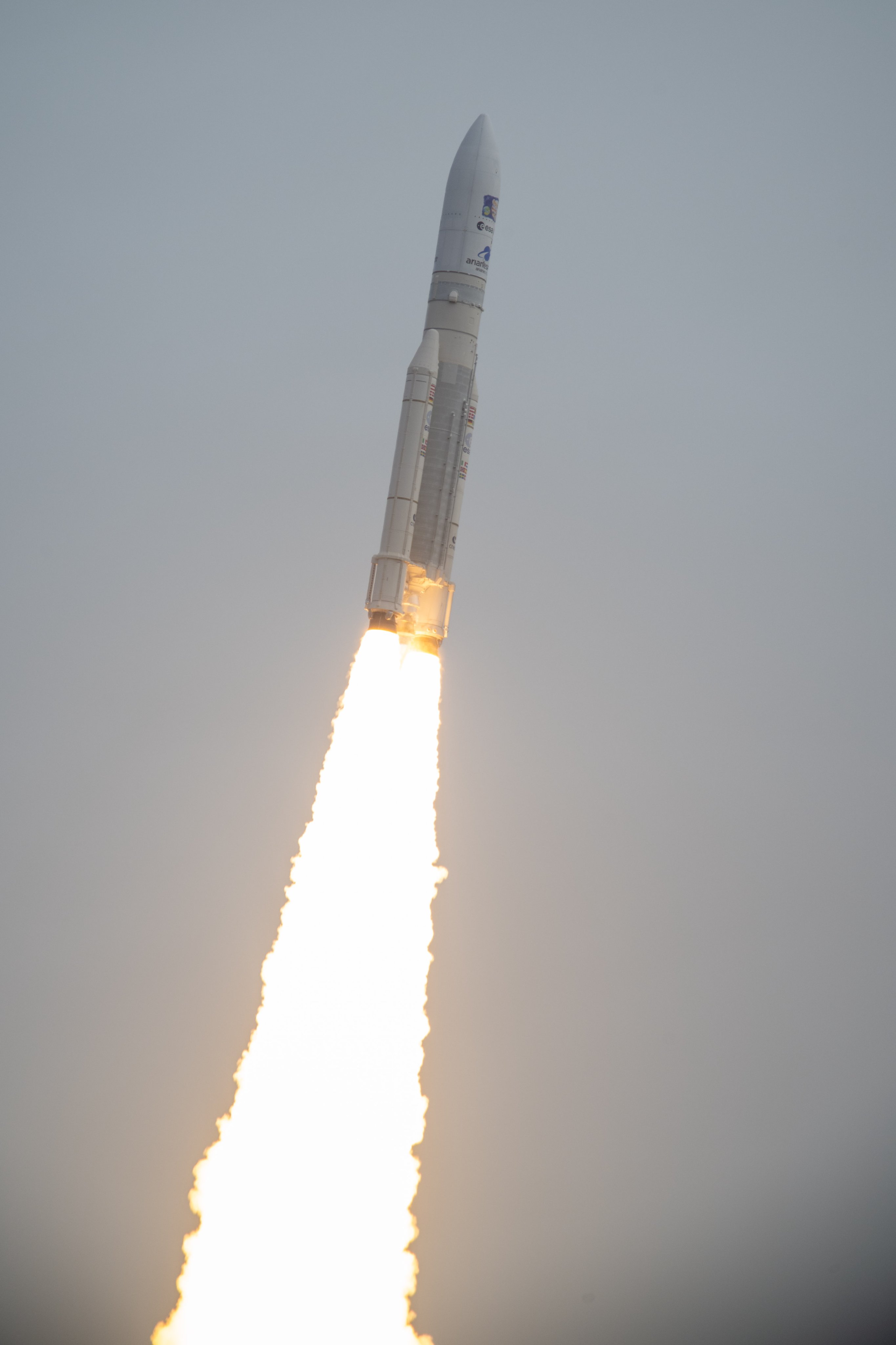
The European Space Agency (ESA) has launched its first flagship exploration mission and its first voyage to the outer solar system, and the event marks a significant moment for Europe's space endeavors.
ESA's Jupiter Icy Moons Explorer spacecraft, or JUICE for short, launched on an Ariane 5 rocket from Kourou, French Guiana, on Friday morning (April 14), beginning its long journey to Jupiter.
"This is a great day for European space science as a whole, for ESA," Michel Blanc, an emeritus professor and planetary scientist at the Institute for Research in Astrophysics and Planetology in France (known by its French acronym, IRAP), and a co-investigator on NASA's Juno Jupiter mission, told Space.com.
"For European space scientists, it's really an opening to great avenues of research."
Related: Here's what Europe's JUICE Jupiter mission will teach us

JUICE is an exciting mission in its own right. It builds on previous Jupiter missions and will focus on the Galilean moons Ganymede, Europa and Callisto. Using its 10 scientific instruments, JUICE will seek to confirm the presence of liquid water subsurface oceans on these satellites and look for the conditions and ingredients needed for life.
It is also significant for Europe, marking a key milestone for it and ESA and its science and exploration activities, said Gabriele Redigonda, a research fellow at the European Space Policy Institute (ESPI) in Vienna.
"The mission has a high degree of complexity and difficulty, with regard to the tight launch window, the number of planned maneuvers throughout its lifetime and the extreme environmental conditions," Redigonda said. "The high risk taken by ESA with this mission could represent a step ahead in ESA's approach to science missions."
The mission could also lead to a soft power boost for Europe, with huge possibilities for science communication and enticing Europeans to pursue an interest in space. JUICE's JANUS camera, for instance, will be able to return images of the surface of Ganymede with a resolution of 24.6 feet (7.5 meters) per pixel when orbiting the moon late in its mission, indicating the potential of the mission's science outreach.
And JUICE could generate spinoff technologies from the development of the science instruments as well as the huge solar arrays, which cover a total area of 914 square feet (85 square m).
"What the spacecraft will actually see, and find, is to some extent still a mystery, and the mission will for sure contribute to raise new questions in the scientific community," Redigonda added.

Olivier Witasse, the ESA JUICE project scientist, said that between 500 and 1,000 scientists have been working on the mission, with colleagues in the U.S. and Japan also involved. He noted that JUICE could inform the next icy moons mission from Europe.
Two years ago, the European science community selected themes for Voyage 2050, which included a mission to moons of giant planets, potentially including a lander or a drone.
"We don't know which icy moon or which planet yet … but the heritage of JUICE will be able to prepare the next mission to an icy moon and launch in around 15 years," Witasse told Space.com. "It's a long-term program, and JUICE is just one step."
Blanc and Witasse both said that JUICE's study of the three icy Jovian moons and their interactions with Jupiter will bring fascinating science results.
Additionally, Witasse noted that the eight-year journey to Jupiter is also a wonder in itself. "In terms of trajectory, it's just amazing," he said. "The design is very complex. So every month there will be something in terms of navigation. There will always be something happening during this mission."
JUICE's launch may therefore have just kicked off a much grander voyage for European science.
Follow us on Twitter @Spacedotcom and on Facebook.







